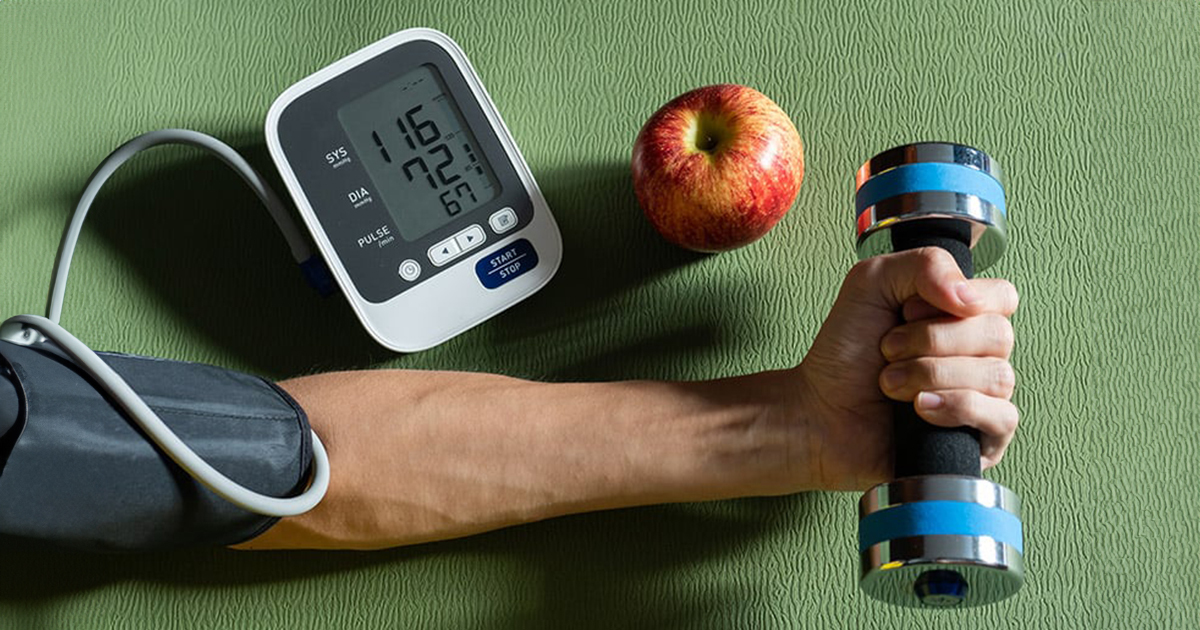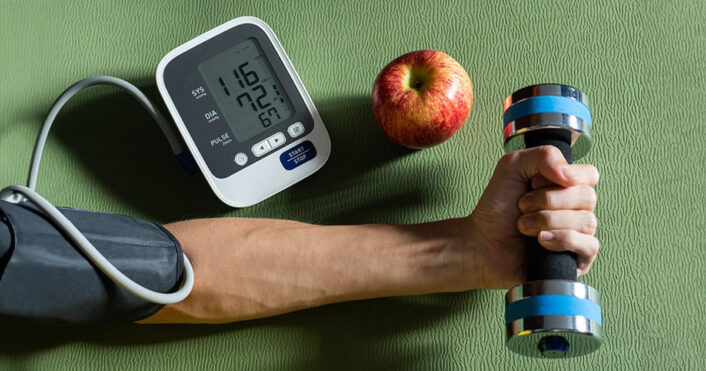Unlocking the Genetic Secrets of Muscle Strength
Aira
on
January 19, 2024
Latest Posts
Table of Contents
Unlocking the Genetic Secrets of Muscle Strength
Date of Content: December 17, 2023
Written by: Harvey Talento
Reviewed by: Maarit Tiirikainen, PhD
Introduction
Muscle strength is the ability to move and lift objects with force and weight. It is an important component of fitness and wellness, as it enhances one’s performance, appearance, and well-being. Muscle strength can be achieved by doing exercises that challenge the muscles to work harder than normal, such as weightlifting, bodyweight exercises, or resistance band exercises.
Engaging in regular strength-training exercises is key to optimizing muscle strength. Activities that intentionally challenge the muscles to exert more force than they are accustomed to are particularly effective.

Why are Strong Muscles Important?
Muscle strength is not only important for athletes and bodybuilders but also for everyone who wants to optimize their wellness and fitness. Having strong muscles can help an individual perform daily activities with ease, such as carrying groceries, climbing stairs, or lifting heavy objects.
Muscle strength can also prevent injuries, improve posture, and protect bones and joints from wear and tear. Moreover, muscle strength can boost metabolism, burn more calories, and maintain a good body weight.
By doing regular strength training exercises, muscle mass, power, and endurance can be increased to fully enjoy the benefits of a strong and fit body.
Genetics of Muscle Strength
The traits encoded by genes determine how muscles respond to different types of exercise – impacting strength, endurance, and overall athletic performance. Understanding the role of genes and their variants in shaping these attributes provides valuable insights into the diversity of physical abilities among individuals.
ACTN3
ACTN3 gene encodes a protein called alpha-actinin-3, which is found in fast-twitch muscle fibers. These fibers are responsible for explosive and powerful movements, such as sprinting and jumping. Some people have a variant of this gene that results in the deficiency of alpha-actinin-3 in their muscles.
This variant, known as R577X (rs1815739-T), is more common in endurance athletes than in power athletes, suggesting that it may reduce muscle strength and performance.
CKM
The CKM gene encodes a protein called creatine kinase M, which is involved in the production and regeneration of energy in the muscles. Creatine kinase M helps to convert creatine into phosphocreatine, which is used to replenish the ATP (adenosine triphosphate) that is consumed during muscle contraction. A variant of this gene, known as rs8111989-C, can affect the activity and expression of creatine kinase M in the muscles resulting in increased muscle strength.
IL6
IL-6 gene encodes a protein called interleukin-6, which is a cytokine that regulates inflammation and immune responses. Interleukin-6 is also involved in muscle growth and repair, as it stimulates the production of growth hormone and insulin-like growth factor 1 (IGF-1).
A variant of this gene, known as rs1800795-C, affects the amount of interleukin-6 that is produced in response to exercise. This variant has been associated with lower levels of muscle strength and mass, as well as higher levels of muscle damage and fatigue.
These are just some examples of the genes that influence muscle strength, but there are many more that are yet to be discovered or understood. The effects of these genes are also influenced by other factors, such as age, sex, ethnicity, and environmental interactions.
Non-Genetic Factors Influencing Muscle Strength
Muscle strength is not only influenced by genetic factors, but also by environmental, nutritional, and lifestyle factors. Below are some of the non-genetic factors that have been associated with muscle strength.
Exercise
Exercise is the most effective and well-known way to improve muscle strength, as it stimulates muscle growth, adaptation, and repair. Different types of exercise, such as resistance, endurance, or combined training, have different effects on muscle strength and its determinants, such as muscle mass, fiber type, architecture, and neural activation.
The optimal exercise prescription for muscle strength depends on several factors, such as age, sex, baseline fitness, goals, and preferences.
Nutrition
Nutrition plays a crucial role in muscle strength, as it provides the energy and the building blocks for muscle synthesis and maintenance. Adequate intake of protein, especially of high biological value and rich in essential amino acids, is essential for muscle strength, as it stimulates muscle protein synthesis and prevents muscle protein breakdown.
Other nutrients, such as carbohydrates, fats, vitamins, minerals, and antioxidants, are also important for muscle strength, as they modulate energy metabolism, inflammation, oxidative stress, and hormonal balance. Dietary supplements, such as creatine, beta-alanine, caffeine, and omega-3 fatty acids, may also have some beneficial effects on muscle strength, depending on the dose, timing, and individual response.
Lifestyle
Lifestyle factors, such as sleep, stress, smoking, and alcohol consumption, can also affect muscle strength, either directly or indirectly. Sleep is important for muscle strength, as it facilitates muscle recovery, growth hormone secretion, and neural function.
Stress can impair muscle strength, as it increases cortisol levels, inflammation, and muscle catabolism. Smoking can reduce muscle strength, as it decreases blood flow, oxygen delivery, and muscle mass. Alcohol consumption can also impair muscle strength, as it interferes with protein synthesis, hydration, and motor coordination.
How To Optimize Muscle Strength
Beyond the sheer effort in lifting weights, optimizing your workouts involves smart pre- and post-training nutrition, mindful rest intervals, and an emphasis on specific exercises.
Fueling Your Workouts
Before diving into your strength training session, consider consuming fast-acting carbohydrates approximately 30 minutes before the workout. These carbs play a crucial role in providing your muscles with the necessary glycogen, acting as fuel during the workout. Additionally, post-exercise replenishes your glycogen stores by consuming more carbohydrates, aiding in the recovery process.
Strategic Rest Intervals
When aiming for strength development, incorporating adequate rest intervals between sets is essential. Opt for rest periods of up to 3 minutes between sets. This extended rest time allows your muscle cells to fully recover, ensuring they’re ready to exert maximum force on the subsequent set.
Training with Intensity
To effectively build muscle strength, focus on lifting heavy weights with relatively low repetitions. Prioritize compound exercises like squats, deadlifts, pressing movements, and pull-ups in your routine. Aim to keep your rep range between 2-10, concentrating on form and controlled movements throughout each repetition.
Fatigue Management with RIR-Based RPE Scale
Managing fatigue is crucial for consistent strength gains. The RIR (rep in reserve) Based RPE (perceived rate of exertion) scale can be a valuable tool in this regard. RIR indicates how many reps you have left in the tank, allowing you to gauge your effort level. This awareness aids in optimizing your training intensity while preventing overexertion and ensuring sustainable progress.
Incorporating these strategies into your strength training routine can contribute to enhanced muscle strength, improved endurance, and a more effective overall workout experience. Remember, consistency and a holistic approach to fitness are key elements in achieving long-term strength gains.
About the LifeDNA Fitness Report
Unlock the secrets of your muscle strength blueprint with the LifeDNA Fitness Report! This personalized report delves into your genetic makeup to unveil valuable insights about your inherent muscle strength potential and other physical measures related to strength training.
Begin your personalized adventure toward enhanced muscle strength and overall fitness by obtaining your Fitness Report from LifeDNA today!
Summary
- Muscle strength is crucial for overall health, impacting daily activities, injury prevention, and metabolic function. Achieving optimal strength involves tailored exercises and understanding genetic and non-genetic factors influencing muscle development.
- Genetic traits mediated via ACTN3, CKM, and IL6 play a role in how muscles respond to exercise, influencing strength, endurance, and performance. Other factors such as age, sex, ethnicity, and environment contribute to this complex interplay.
- Beyond genetics; environmental, nutritional, and lifestyle factors such as exercise type, nutrition, and sleep play significant roles in muscle strength.
- Effective strategies for muscle strength include strategic rest intervals, intense training with heavy weights, and smart pre- and post-training nutrition. Tools like the RIR-based RPE Scale aid in fatigue management for sustainable progress.
References
- https://link.springer.com/article/10.1007/s40279-018-0862-z
- https://www.nature.com/articles/5201964
- https://journals.plos.org/plosone/article?id=10.1371/journal.pone.0217390
- https://www.termedia.pl/A-meta-analysis-of-the-association-of-CKM-gene-rs8111989-polymorphism-with-sport-performance,78,30518,0,1.html
- https://pubmed.ncbi.nlm.nih.gov/22567844/
- https://www.jsams.org/article/S1440-2440(17)30476-0/fulltext
- https://www.jsams.org/article/S1440-2440(09)00188-1/fulltext
- https://mdpi-res.com/d_attachment/healthcare/healthcare-10-01937/article_deploy/healthcare-10-01937.pdf?version=1664782593
- https://www.frontiersin.org/articles/10.3389/fmed.2021.697954/full
Customer Reviews




*Understanding your genetics can offer valuable insights into your well-being, but it is not deterministic. Your traits can be influenced by the complex interplay involving nature, lifestyle, family history, and others.
Our reports have not been evaluated by the Food and Drug Administration. The contents on our website and our reports are for informational purposes only, and are not intended to diagnose any medical condition, replace the advice of a healthcare professional, or provide any medical advice, diagnosis, or treatment. Consult with a healthcare professional before making any major lifestyle changes or if you have any other concerns about your results. The testimonials featured may have used more than one LifeDNA or LifeDNA vendors’ product or reports.




















